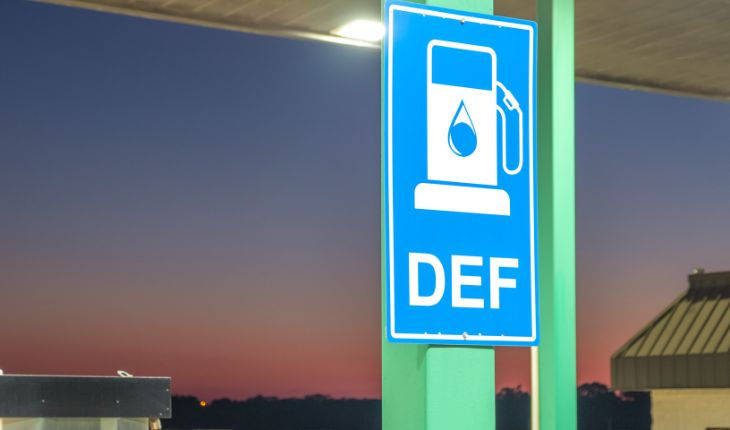The Saudi Arabia Fuel Station Market Outlook 2024-2032: Growth Drivers, Market Challenges, and Competitive Landscape
- Sophia Grace
- May 8, 2024
- 4 min read
The Saudi Arabia fuel station market size is poised for significant growth, projected to expand at a CAGR of 7.5% between 2024 and 2032. This growth is fueled by the expanding automotive sector, rising population, and government policies supporting infrastructure development. As a leading producer of crude oil, Saudi Arabia has a thriving fuel industry, and the demand for fuel stations continues to grow due to urbanization and economic expansion.

Market Overview and Size
The increasing population, coupled with rapid urbanization and rising vehicle ownership, is driving the expansion of the Saudi Arabian fuel station market. By 2032, the market will have expanded significantly, offering opportunities for both existing players and new entrants. The government’s Vision 2030 strategy has placed considerable emphasis on economic diversification, infrastructure, and technological advancements, which will further boost the fuel station market.
Market Dynamics
1. Market Drivers:
Population Growth and Urbanization: Saudi Arabia’s rapidly growing population is leading to increased demand for fuel stations, especially in urban areas.
Rising Vehicle Ownership: With a rapidly expanding automotive sector, the number of vehicles on the road is increasing, directly boosting fuel consumption.
Government Policies and Investments: The government’s infrastructure investments and policies are facilitating the growth of fuel stations by improving the ease of doing business.
Infrastructure Development: Mega-projects and infrastructure development are leading to increased demand for fuel.
2. Key Market Challenges:
Environmental Regulations: Increasingly strict environmental regulations regarding fuel emissions could impose additional costs on fuel stations.
Shift Toward Electric Vehicles: While EV adoption is still in its nascent stages in Saudi Arabia, it could impact fuel station revenues in the long run.
Economic Diversification: With the government’s push towards economic diversification, non-oil sectors could gain prominence, affecting the overall fuel demand.
Market Segmentation
The Saudi Arabia fuel station market is segmented based on fuel type, service, and region.
1. By Fuel Type:
Gasoline: The primary fuel for passenger vehicles, gasoline will remain dominant due to the large population of gasoline vehicles.
Diesel: Primarily used for commercial vehicles, diesel remains significant.
Alternative Fuels: Natural gas, biofuels, and hydrogen are emerging but have limited market share.
2. By Service:
Fuel Sales: The primary source of revenue for most fuel stations remains the sale of gasoline and diesel.
Convenience Stores: An increasing number of fuel stations are integrating convenience stores to diversify revenue streams.
Vehicle Services: Maintenance and repair services offer additional income to stations.
3. By Region:
Western Region: Includes cities like Jeddah and Makkah, which have high vehicle densities and fuel consumption.
Eastern Region: Home to major oil infrastructure and the city of Dammam, this region has high fuel demand.
Central Region: Riyadh, the capital city, has significant demand for fuel stations due to urbanization.
Component Insights
1. Infrastructure Development:Fuel station infrastructure, including state-of-the-art pumps, convenience stores, and rest areas, is evolving to cater to changing consumer needs. Digital payment systems and technology-driven fuel dispensing systems have gained prominence.
2. Technology Integration:Smart technology in payment systems, fuel monitoring, and customer relationship management is becoming increasingly common, enhancing operational efficiency.
End-user Insights
1. Individual Consumers:Individual drivers remain the largest segment, requiring a wide network of stations for fueling their personal vehicles.
2. Commercial Fleets:Fleet operators and logistics companies seek fuel stations that offer bulk fuel purchasing and maintenance services.
Key Players and Competitive Landscape
Key players in the Saudi Arabia fuel station market are focusing on service enhancement, technology integration, and geographic expansion.
Wafi Energy Company: Offers comprehensive fuel and convenience services, emphasizing technology integration.
ALDREES Petroleum & Transport Services Company: Focuses on expanding its retail network and improving customer experience.
Petromin Corporation: Specializes in automotive services and fuel distribution.
TotalEnergies SE: Global energy provider with an extensive retail network and alternative energy offerings.
ADNOC Distribution: A prominent player in fuel retailing with a growing presence in Saudi Arabia.
ENOC Company: Expands its fuel station network to provide high-quality fuel services.
Saudi Automotive Services Co (SASCO): Offers retail and travel services, focusing on customer satisfaction.
Tas'Helat Marketing Company: Develops state-of-the-art fuel stations with innovative services.
Fuel Integrated Limited (Fuel Way): Focuses on providing integrated fuel solutions.
Al-Atoz Petroleum Services Company: Emphasizes customer service and infrastructure development.
Liter Group: Expands its presence with high-standard fuel station services.
Market Trends and Industry News
Diversification of Services: Fuel stations are increasingly diversifying their service offerings, integrating convenience stores and automotive maintenance services.
Digital Payments: The adoption of digital payments is rapidly increasing, enhancing customer convenience.
Renewable Energy Integration: Fuel stations are experimenting with renewable energy sources to power their facilities.
EV Charging Infrastructure: Some fuel stations are introducing electric vehicle charging infrastructure, anticipating future EV growth.
Application Insights
Retail Fuel Sales: Most fuel stations continue to generate the bulk of their revenue from gasoline and diesel sales.
Convenience Stores: Fuel stations are incorporating branded convenience stores to cater to diverse consumer needs.
Fleet Services: Many stations offer bulk purchasing and maintenance services to logistics companies.
FAQs
1. What is the projected growth rate of the Saudi Arabia fuel station market?The Saudi Arabia fuel station market is expected to grow at a CAGR of 7.5% between 2024 and 2032.
2. What are the key factors driving growth in the fuel station market?Population growth, urbanization, and government policies supporting infrastructure development are the primary growth drivers.
3. How is technology influencing the fuel station market in Saudi Arabia?Digital payments, smart fuel monitoring systems, and customer relationship management tools are enhancing efficiency.
4. What are the main challenges facing the fuel station market?Environmental regulations, the shift towards electric vehicles, and economic diversification pose challenges.
5. Which services are fuel stations incorporating to diversify their revenue streams?Convenience stores, vehicle services, and fleet services are gaining popularity among fuel station operators.
6. How are fuel stations preparing for the rise of electric vehicles?Some stations are incorporating EV charging infrastructure while diversifying their services to include non-fuel revenue streams.









Comments